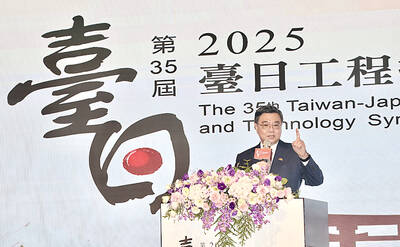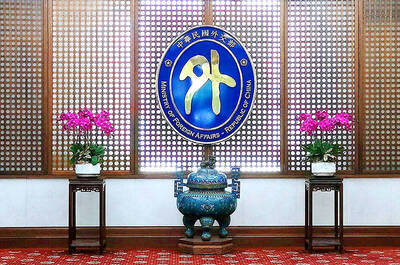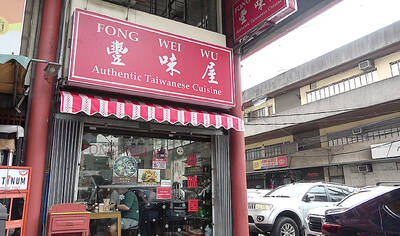Taiwan’s efforts to cement ties with China could undermine its vibrant media environment by skirting topics deemed sensitive to Beijing, observers say.
Concern has grown after Taiwan’s ranking fell 23 places to 59th place in this year’s press freedom index released by Paris-based Reporters Without Borders (RSF) last week.
The sharp drop has left Taiwan trailing behind Hong Kong, which came in at 48, as well as African nations such as Ghana, Mali and Burkina Faso.
In one example of the problems Taiwan’s journalists say they are facing, one reporter complained about pressure from the authorities when covering an exiled Chinese dissident’s visit.
“They told me he’s a ‘bad guy’ who likes to brag so why bother writing about him,” the reporter, who asked not to be named, said. “They believe they are doing the right thing for the big picture, for the greater good in history.”
While RSF said Taiwan’s press freedom was not in danger, it attributed the downgrading partly to the ruling party’s attempts to interfere in the media.
“The state must take action to improve records and prevent restrictions, violence or any sort of obstacle to the media freedom,” said Vincent Brossel, head of RSF’s Asia desk.
The index, based on questionnaires completed by hundreds of journalists and media experts, reflects press freedom violations that took place between September last year and August this year.
The government has denied interfering.
“We did not see any media being pressured for criticizing the government when it was not doing enough. The government humbly accepted the criticism,” Cabinet Spokesman Su Jun-pin (蘇俊賓) said.
Some observers and journalists say the RSF index is a warning of how far Taiwan is prepared to go to appease its giant neighbor.
“More media outlets are self-censoring on sensitive issues such as the Dalai Lama or Rebiya Kadeer by downplaying their coverage or focusing on negative angles,” said Leon Chuang (莊豐嘉), head of the Association of Taiwan Journalists.
Beijing accuses the Dalai Lama of trying to separate Tibet from China and blames Kadeer for bloody ethnic unrest in her home region Xinjiang in July.
It all comes down to business, as public and private sectors aim to cash in on China’s economic clout, Chuang said, adding: “It is a threat to Taiwan’s press freedom and diversity. If this persists, we will only be getting select coverage and one-sided stories.”
Ties with China have improved since President Ma Ying-jeou (馬英九) became president but were strained by the Dalai Lama’s recent visit. Beijing was also angered by screening of a Kadeer biopic but reportedly is planning to reward Taipei by signing a key financial pact after she was barred from visiting.
“We see political considerations weighing on the handling of news as the government makes the development of cross-strait ties its priority,” said Lo Shih-hung (羅世宏), a media expert at National Chung Cheng University.

ALIGNED THINKING: Taiwan and Japan have a mutual interest in trade, culture and engineering, and can work together for stability, Cho Jung-tai said Taiwan and Japan are two like-minded countries willing to work together to form a “safety barrier” in the Indo-Pacific region, Premier Cho Jung-tai (卓榮泰) yesterday said at the opening ceremony of the 35th Taiwan-Japan Modern Engineering and Technology Symposium in Taipei. Taiwan and Japan are close geographically and closer emotionally, he added. Citing the overflowing of a barrier lake in the Mataian River (馬太鞍溪) in September, Cho said the submersible water level sensors given by Japan during the disaster helped Taiwan monitor the lake’s water levels more accurately. Japan also provided a lot of vaccines early in the outbreak of the COVID-19 pandemic,

The Ministry of Foreign Affairs (MOFA) yesterday voiced dissatisfaction with the Comprehensive and Progressive Agreement for Trans- Pacific Partnership (CPTPP), whose latest meeting, concluded earlier the same day, appeared not to address the country’s application. In a statement, MOFA said the CPTPP commission had "once again failed to fairly process Taiwan’s application," attributing the inaction to the bloc’s "succumbing to political pressure," without elaborating. Taiwan submitted its CPTPP application under the name "Separate Customs Territory of Taiwan, Penghu, Kinmen and Matsu" on Sept. 22, 2021 -- less than a week after China

Kaohsiung Mayor Chen Chi-mai (陳其邁) on Monday announced light shows and themed traffic lights to welcome fans of South Korean pop group Twice to the port city. The group is to play Kaohsiung on Saturday as part of its “This Is For” world tour. It would be the group’s first performance in Taiwan since its debut 10 years ago. The all-female group consists of five South Koreans, three Japanese and Tainan’s Chou Tzu-yu (周子瑜), the first Taiwan-born and raised member of a South Korean girl group. To promote the group’s arrival, the city has been holding a series of events, including a pop-up

A home-style restaurant opened by a Taiwanese woman in Quezon City in Metro Manila has been featured in the first-ever Michelin Guide honoring exceptional restaurants in the Philippines. The restaurant, Fong Wei Wu (豐味屋), was one of 74 eateries to receive a “Michelin Selected” honor in the guide, while one restaurant received two Michelin stars, eight received one star and 25 were awarded a “Bib Gourmand.” The guide, which was limited to restaurants in Metro Manila and Cebu, was published on Oct. 30. In an interview, Feng Wei Wu’s owner and chef, Linda, said that as a restaurateur in her 60s, receiving an